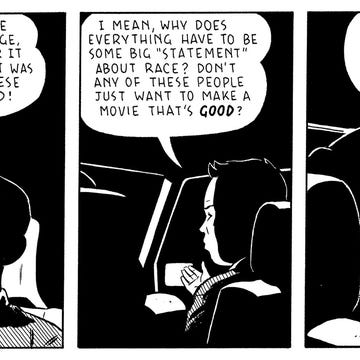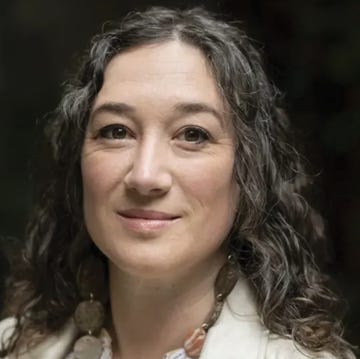Noir stories have the power to suffocate. They’ll grip you in the same stifling circumstances that they do their characters, making you feel as if you, too, are ensnared in a situation where a morally ambiguous action is the only escape. They’re also firmly rooted in place. So, what better setting for a series of stories than Sacramento? It’s the capital of California and ought to be the state’s crown jewel, but instead, it’s an unknowable expanse of historic neighborhoods, sprawling suburbs, and sturdy-looking levees that, of course, could fail.
Sacramento Noir, a new book of stories edited by poet, critic, and California Book Club host John Freeman, leverages this precariousness to deliver more than its share of cynical, nihilistic characters. Freeman, who was raised in Sacramento, has gathered stories that tunnel deep inside this often-overlooked city, capturing its economic, social, and racial complexities while also—with the exception of a few pieces—boldly updating the genre’s conventions. New iterations of the form here involve a charter school scam, homeless encampments, and a Palestinian refugee.
For people driving Interstate 80 from the east to, say, the Bay Area or from the west to Lake Tahoe and points beyond, Sacramento looms as a seemingly enchanted island of “tall buildings coming up out of the flat land…the Emerald City,” as the narrator of “One Thing About Blue,” by Maureen O’Leary, puts it.
Yet the 13 stories of Sacramento Noir collectively push back against this gleaming view of the capital to describe instead desperate characters in desperate neighborhoods, places where hope is forlorn and something bad will soon occur, no matter what. The narrator of “Take As Needed,” by Shelley Blanton-Stroud, discloses this inevitable sense of doom when talking about something as simple as the weather:
It was only 101. They were projecting 107 for the Fourth. The TV meteorologist still called it state fair weather, even though they’d moved the fair from July to August years ago to try to catch a break on the heat. I couldn’t blame them for the attempt, even if it didn’t work. These days, August gave us heat and wildfire smoke. You think you’ve fixed something and it just gets worse.
For Blanton-Stroud’s narrator and the other protagonists in this collection, things do indeed get worse. Much worse.
Alta Journal caught up with Freeman to discuss Sacramento Noir just days before its publication. This interview has been edited for brevity and clarity.
Noir stories are often described as bleak, cynical, and rife with moral ambiguity. What distinguishes these stories as “Sacramento” noir?
Well, all the stories take place in and around Sacramento, and so the atmosphere of bleakness, of moral ambiguity, emerges from the city’s landscape: its rivers and what they contain, the fields that stretch out to Davis and what they may hide, the city’s many thousands of trees. Trees can seem benign or they can seem ominous, depending on the mood struck. Within this ecosystem, there’s the built environment itself—and inside that a portrait of people who are living, as people often do in noir, in the face of things they can’t change. Systems bigger than them. This is a capital city, of course, where power moves in overt and secret ways.
The incidents of the book hint at a fundamental darkness to existence. In stories like “The Former Detective,” by Jamil Jan Kochai, that manifests as a dead body found in a field behind a man’s apartment complex; in Naomi J. Williams’s “Sakura City,” a businessman who preys upon shop owners in the wake of World War II and the Japanese incarceration starts lurking around just as a city referendum about the neighborhood has come up for a vote. Their neighborhood, Sakura City, was once the fourth-largest Japanese neighborhood in America. This story takes place as that begins to turn. If anything, what these stories excel at is showing large movements happening up close—lover to lover, family member to outsider, coworker to coworker.
What do these stories reveal about Sacramento?
They show a couple things about Sacramento. Nearly one-quarter of Sacramentans were born outside the United States. This is a significant force in city life; a “before” and an “after” lives inside many people there. The variety of stories here shows how this presses down on people, from within and without. In noir, typically, there’s a lone person at odds with the group, with society, and that is the case here, except that the protagonists of the stories in this book are often part of a group, too, one trying to make its way in the city. In Nora Rodriguez Camagna’s story, for instance, people dealing with a terrible event don’t have a place to turn except to one another. In Williams’s story, they don’t call the cops on the man lurking about: They have another solution. But it’s not a paean to mutual aid here. In Maceo Montoya’s story, set within a burgeoning Chicano movement, infighting leads to a deep distrust of our narrator and what he is there to do.
Another thing you might sense of Sacramento is its age and layers. It has been the state capital since 1854. Quite a few stories here are set in the past, like Williams’s, like José Vadi’s tale of a hustler trying to get out of town before heat comes down on him. Reading the book, it’s impossible not to note how there are layers of wealth and development in the city that are not immediately apparent but become apparent in houses passed down family lines—as in Reyna Grande’s story, and in Blanton-Stroud’s tale, which specifically involves the fight over how that house will be passed and to whom.
Finally, I think there’s a powerful, elemental sense of menace moving through these stories—whether it’s the train whistle you hear in the background, pulsing through Jen Soong’s tale of a woman and her bad boyfriend, or the river, which appears in nearly half of these tales. “We took a turn through the Delta by the river that was a broken mirror for the sky,” O’Leary writes at one point. “This is haunted country,” says the narrator’s friend. Indeed, it is.
In The Day of the Locust, Nathanael West’s characters wind up confronting darkness and desolation because, by and large, “they don’t know what to do with their time.” The protagonists in several of Sacramento Noir’s stories stay busy with jobs, but trouble finds them nonetheless. The narrator of “Sakura City” is a florist by day and a dishwasher at night. Gina Lee in “Ghost Boy” is a drug-dealing clerk working minimum wage at a pharmacy. In “One Thing About Blue,” the narrator is a janitor at a charter school. Yet isn’t there more going on here than a twist on the adage of hunger making a thief of anyone?
The best crime stories, the most relatable—and this applies for noir, too—involve people driven to do things because of understandable circumstances. Inescapable circumstances. Isn’t this why shows like Breaking Bad or Ozark are so plausible? Many Americans are one illness away from bankruptcy. This creates a constant vibration of violence and precariousness in this country. Even those not standing right on the edge know the cliff will be steep, if they wind up there. So the leap of logic to imagine our way into characters dealing drugs, say, or stealing from card games, or ripping off the public school district—it’s not very big. These stories parlay that feeling into stories that reverberate around issues to do with living in a city where power often only helps the few.
I wouldn’t consider all the writers in this collection, first and foremost, to be hard-boiled crime writers. Grande, William T. Vollmann, and Vadi, for instance, or you, for that matter, yet their stories read as if written by veterans of the genre. What is it about noir that writers find attractive?
No, but all of them have been writing fiction and nonfiction, which is informed by large-scale crimes. Be it how America treats people whose only crime is coming here to look for a better life, to veterans coming home from wars where they sacrificed everything. And for what? Vollmann’s characters wind up in a homeless encampment leaning on one another. If there’s one thing I love about noir as a form, it’s the genre’s hostility to the status quo. Does anybody today feel that the way things are is acceptable? Or even remotely fair? Noir gives you such a subtle set of conventions in which to explore that feeling.
In Vollmann’s piece, the world inside the camp isn’t flattened by its deprivations: There’s a universe of relationships and love, one that bounces off some of the dangerous loves you see in noir fiction. Vollmann has spent his whole life stepping outside the stories America tells about itself, about the people it deems expendable, and I think given his variety of styles, it wasn’t a surprise to me he had a piece that had the edge of crime when depicting homelessness.
The same goes for Grande and Vadi; each of them looks at the status quo through distorted lenses that the world has placed upon them—as outsiders—and they also have the capacity to depict intense do-or-die emotions, loves. At the heart of all three of these pieces is love—love unfolding or interrupted by desperation.
Thirteen is a number rich with significance, considered a symbol of luck and faith by some cultures, a bad omen by others. Was selecting 13 stories for this collection a conscious choice?
No, it happened by chance—we stopped when we felt we had a group of stories you could hold in your hand and read in a few feverish jags. I am especially happy that one of these 13 is Luis Avalos’s “A Textbook Example,” about a guy who comes to Sacramento to hide out because he looks like the crude sketch of a stabber on the loose in Davis. As the days go by, his mind turns faster and faster, until he’s in a living nightmare. I think the best noir experiences are a bit like this—they’re dreamlike, sped up; they operate on you sensually and provide in that interaction a new frame, a different frame, for how to think about life in a place in a dark time.•
WHY I WRITE
March CBC author Rita Bullwinkel writes a stunning experimental essay circling her motives for writing fiction. —Alta
THE FUTURE IS HERE
National Book Critics Circle president Heather Scott Partington reviews Laila Lalami’s latest novel, The Dream Hotel. —Alta
10 NEW RELEASES
Here are the titles of the West publishing in March that we’re most excited about. —Alta
GRIM UNDERBELLY
CBC host John Freeman will be appearing at City Lights Bookstore on March 12 at 7 p.m. Pacific to celebrate Sacramento Noir alongside writers Naomi J. Williams, Maceo Montoya, and prior CBC author Reyna Grande. —City Lights
MAGGIE THE MECHANIC
Prior CBC author Jaime Hernandez has released a new Locas collection of stories about Maggie Chascarillo, Life Drawing. —New York Times
“COVER TO COVER”
A new PEN report provides a comprehensive analysis about books banned in school year 2023–2024. —Publishers Weekly
Alta’s California Book Club email newsletter is published weekly. Sign up for free today.



















